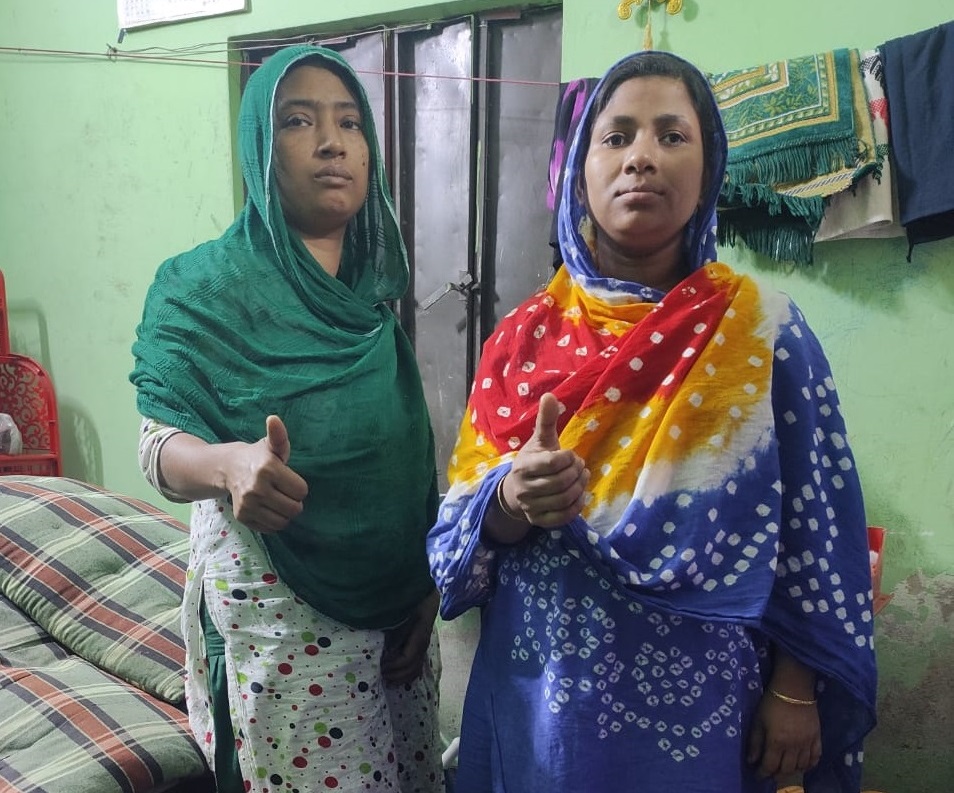In September 2022 the Garment Worker Diaries initiative in Bangladesh implemented a few operational changes. Considering aggregate data from the Labor Force Survey (LFS) the sample size was reduced from 1,300 to 1,000 to come within 1% of the LFS sample share in each region covered by the project. Additionally, we replaced all respondents from the sample that had been unemployed for more than three months. As last year was coming to a close, we also wanted to make room in the survey for additional special questions to be submitted by stakeholders. Because each survey we administer is tailored to be of a specific duration and use a specific amount of cellular airtime, we had to remove certain core questions from our weekly surveys. What follows is an update on the employment, salary and rent payments data from garment workers in Bangladesh through December 2022.
Note: Banner photo courtesy of a garment worker in Bangladesh; numbers in graphs may not sum to 100% due to rounding.
Employment
Because we dropped and replaced all respondents from our study in September 2022 who had been unemployed for more than three months, the employment rate in September 2022, 93%, was the highest we’d recorded in our study up until that point. That employment rate increased to another new high for the study, 94%, in October 2022, stayed there in November and then fell back down to 92% in December. As has been typical of the study over the previous 33 months, men were somewhat more likely to have worked than women over that time period, ending the year with 91% of women employed and 97% of men.
Compared to the same time last year, typical monthly work hours were down slightly in the fall of 2022: median monthly hours worked were 264, 259 and 249 in October, November and December 2022, respectively (compared to 275, 280, and 277 in October, November and December 2021). Also as usual, men were more likely than women to work a few more hours per month.
Among respondents who did go to work at some point in the fall of 2022 but also missed at least one full week of work or more, 50% or more of respondents over that time period reported quitting one’s job as a reason for any period of unemployment. The other most likely reasons for not working included being on maternity leave, being sick, returning to the village, and “other” reasons.
For that same time period, among respondents who were completely unemployed (meaning they did not go to work at all) having quit one’s job and being on maternity leave were the top two reasons for not working.
Salary Payments
In the fall of 2022, men were a bit more likely than women to have received a salary payment, with the typical salary payment for all workers being Tk. 11,000, Tk. 11,400, and Tk. 11,000 in October, November and December 2022, respectively (with men earning Tk. 1,100, Tk. 1,600, and Tk. 1,000 more than women in each month, also respectively).
Digital salary payments continued to be slightly more prevalent than cash salary payments in the fall of 2022. The share of digital salary payments in December 2022, 60%, actually reached a level not seen since August 2020 when the share of digital salary payments was 63% (September 2021 and September 2020 also saw the share of digital salary payments reach 60%). As for mixed salary payments (both digital and cash), only two respondents received such a salary payment in October 2022, and one each in November and December.
Rent Payments
The typical amount of rent paid in October, November and December 2022 was Tk. 3,500 and men were slightly more likely than women to have paid rent in each month.
The data are drawn from interviews with 1,300 garment workers interviewed weekly during and prior to August 2022; and 1,000 workers interviewed from September 2022 to December 2022. The number of worker responses in a particular month varies depending on interview participation rates throughout the month. These workers are employed in factories spread across the five main industrial areas of Bangladesh (Chittagong, Dhaka City, Gazipur, Narayanganj, and Savar). Three-quarters of the working respondents were women, roughly representative of workers in the sector as a whole.






